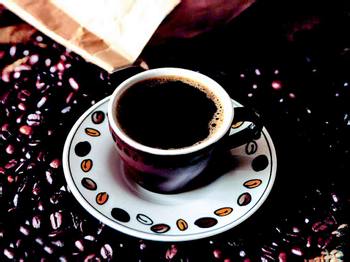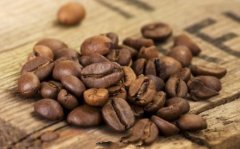The production process of coffee beans introduction to the types of coffee beans

Arabian species, Robusta species, Libirian species
Arabian coffee accounts for about 2% of the world's coffee production. The plant is not suitable for high temperature, low temperature, more rain and less rain. Coffee beans are oval and flat, with high quality and rich aroma.
Robusta coffee has a strong bitter taste, no sour taste, and the flavor is not very good, so it is better to mix it than to use it alone. Often used to make frozen coffee, instant coffee, canned coffee. Suitable for planting in low-lying areas. The plant has the characteristics of strong disease resistance and fast growth.
Coffee grown in Liberia is of low quality and output and is only exported to Europe.
Flat beans and round beans
The ripe red coffee fruit has a multi-layered structure as shown in the picture. The pale green core with a little blue in the middle is the coffee bean.
In general, the core of a coffee fruit is oval. When two kernels are opposite to each other, flat beans are formed; sometimes single kernels grow to form round beans. The difference between the two kinds of beans is mainly in their taste.
From harvest to delivery
After the fruit is harvested, the skin and flesh must be removed. The endocarp and silver peel are removed to form coffee beans. There are two kinds of methods: drying (natural drying, non-washing) and washing.
Dry type, the operation is relatively simple, the harvested fruit will be spread on the dry ground and basked in the sun for a week or two. The sound of rattling can be heard when it is turned, which means it is dry. Then use the sheller to remove the pulp, endocarp and silver skin of the dried fruit.
This method gives coffee beans a soft sour taste and a mild bitter taste. This method is used in Brazil, Ethiopia, Yemen and other places. Disadvantages: vulnerable to weather, defective beans and foreign bodies are more likely to mix. Therefore, it is necessary to select it carefully before delivery.
In the washing type, the harvested fruit is poured into the sink, the floating matter is removed, the fruit in the water is moved to the pulp removal machine, the skin and pulp are removed, and then put back into the tank to remove the floating matter, the "core" in the water is poured into the fermentation tank, soaked for half a day or one day, the colloid on the surface of the fermented bean is removed, washed, dried or mechanically dried, and the endocarp is removed on the peeling machine to become commercial raw coffee beans.
The advantages of washing type: coffee beans have good luster, less foreign bodies, and slightly better sour taste. Colombia, Mexico, Guatemala and other countries have adopted this method. Coffee beans produced by washing account for almost 70% of the total output of coffee beans.
Sometimes poor treatment of fermentation time will produce fermentation odor and special sour taste; if handled well, it can form the personalized aroma of coffee beans.
At this time, the coffee beans can be sent to various places in sacks or in special containers.
Important Notice :
前街咖啡 FrontStreet Coffee has moved to new addredd:
FrontStreet Coffee Address: 315,Donghua East Road,GuangZhou
Tel:020 38364473
- Prev

Technology of Fine Coffee treatment of Coffee beans
Coffee beans are the seeds in the coffee fruit. The coffee fruit is exposed to strong sunlight and the seeds are not taken out until the shell is broken. This method is called non-washing or natural drying. Another way is to put the coffee fruit in the sink to flash, soak in water to soften and then remove the flesh. The washing type refining process is that the harvested coffee fruit is put into the sink and soaked in 24 murmurs for 48 hours.
- Next

Five basic knowledge about coffee boutique Coffee
■ fact 1: coffee is good for your health. Doctors say that coffee has both advantages and disadvantages, so moderate consumption of coffee is the key to benefit from it. Studies conducted by American biologists have shown that drinking two to three cups of coffee a day is more than enough to protect the heart, and if you are overweight, they can also increase metabolism and even reduce your appetite. Coffee contains the same content as green tea.
Related
- Beginners will see the "Coffee pull flower" guide!
- What is the difference between ice blog purified milk and ordinary milk coffee?
- Why is the Philippines the largest producer of crops in Liberia?
- For coffee extraction, should the fine powder be retained?
- How does extracted espresso fill pressed powder? How much strength does it take to press the powder?
- How to make jasmine cold extract coffee? Is the jasmine + latte good?
- Will this little toy really make the coffee taste better? How does Lily Drip affect coffee extraction?
- Will the action of slapping the filter cup also affect coffee extraction?
- What's the difference between powder-to-water ratio and powder-to-liquid ratio?
- What is the Ethiopian local species? What does it have to do with Heirloom native species?

